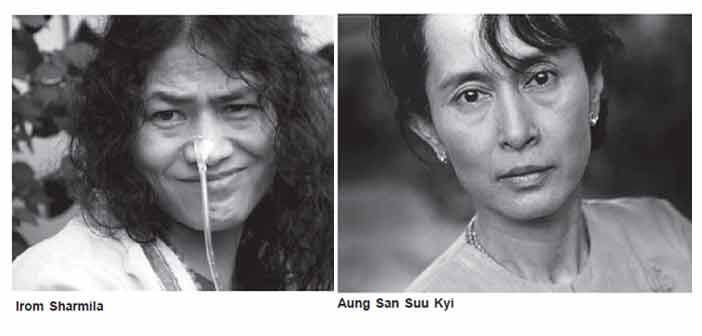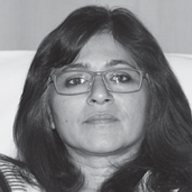According to John Walsh, there is a well-known story about the Chinese travellers who were amazed to see Cham women riding horses and taking part in market vending, in what is now southern Vietnam. Those same travellers – most notably the diplomat Zhou Daguan, whose memoir tells us so much about life in the Khmer Empire – were also surprised to see the high status which women enjoyed in Southeast Asia. In nearly all of the states of that region, women have had more freedom to organise and control their own lives, more than in many other parts of the world. That does not mean that they had equality with men, of course, or that they were not oppressed in certain circumstances. However, sexual freedom and the opportunity to work outside the house were much more likely to be found in this area than in most others. The many legends of female warriors support this idea, as also do the various myths and folk tales of strong women taking the lead.
The strong ethos of Southeast Asia
The reason why I am narrating the above account is because the women of Manipur are also the product of such an ethos. And the reason they belong to this ethos is because Manipur, as one can see from the map, borders Myanmar. Traditionally, it has had links with Thailand, Laos, Vietnam, as well as South West China. There have been various studies done on the cultural, linguistic similarities, as well as the migration routes of the people of this region. The Manipuri women are therefore, part of the Southeast Asian ethos.
I will attempt to discuss the spirit of freedom behind Aung San Suu Kyi’s struggle and Irom Sharmila’s resilience. Are they images of our strong traditions and a peculiar Southeast Asian ethos as mentioned above? Both our iron ladies did nothing out of the ordinary before becoming political stars, but they have been able to change the notions of nation building.
Two women with similar destinies
Aung San Suu Kyi, recipient of the Nobel Peace Prize and the leader of Burma’s National League for Democracy, had lived under house arrest since 1989. She refused to renounce her non-violent opposition of the country’s oppressive military junta.
Similarly, Irom Sharmila nominated to Nobel Prize by the North-East Network, a Guwahati-based women’s organisation, has been on a fast unto-death against the imposition of the 1958 Armed Forces Special Protection Act (AFSPA) in the Northeastern states of India. She is also called The Iron lady of Manipur and Mengoubi (The fair one).
However, her decade-long demand to repeal the controversial law that empowers the armed forces personnel to shoot anyone at mere suspicion (under section 4(a) of AFSPA- 1958), is yet to be heard by the central lawmakers. The 40- year old living legend is currently in judicial custody at the state-run Jawaharlal Nehru Medical Hospital in Imphal, the capital of Manipur. This is her 15th year without food or water. Her form of protest is unique in the history of the world.
Detentions become much more difficult, when you are told that you are free to leave. Suu could have any time phoned a friend, packed her suitcase and left for the loving embrace of her husband and kids. But in doing so she knew that her passport would be cancelled, and she would never be able to come back to her own people. She sacrificed the role of wife and mother. This aspect was used ruthlessly against her by the junta regime when they didn’t even allow her ailing husband to come and meet her.
Sharmila too is free to leave anytime. She can also say that I have done my part, now it is up to the people and the government, and go back to her family to eat all her favourite eromba and sareng and sleep in the loving embrace of her mother. But she also knows that that will be a task left incomplete; the right of her Manipuri brethren to live as dignified citizens.
Ordinary women, extraordinary lives
Both Suu’s and Sharmila’s impact has been spiritual and emotional as much as political. And for both, their fight for justice has been personal and painful. Both the women did nothing out of the ordinary before becoming political icons. Many biographers have emphasised that Suu insisted on being described as a housewife. Sharmila too has been humble about her long struggle, recorded as the longest fast ever. This insistence on being “ordinary” has not been very fruitful. It has led many people to underrate them. While Suu was being portrayed as a menace from abroad, a poster girl, Sharmila has been called a dumb girl, being led by others. Sometimes, the larger than life image of a leader becomes more of a necessity, rather than a choice. To use Weberian terminology, charismatic authority of the leaders help in the fulfilling of goals. Yet again, their insistence on being part and parcel of the people they are struggling for, point to their passion, their devotion and their resolve.
Militarisation and women
Sharmila’s struggle can be traced to the tradition of the women’s collective fight against injustices called the Meira Paibi movement. Meira Paibis are the collective mothers of Manipur. They have waged protests against the injustices meted out by the state forces – from colonial times to the present, as well as by the insurgents. Meira Paibis have originated more as a spontaneous movement of elderly women who were greatly distressed with the acute problems of alcoholism, domestic violence and human rights issues arising out of the serious law and order situations obtaining in the state.
The way we perceive our women is evident in the mythology, legends and folklore of our region. The popular image of a woman is of an independent minded, happy, hardworking individual, with a sense of justice. There are stories of Imoinu, Panthoibi, Laijinglaibi, Pidonu and others, who asserted their opinions and are today used as complimentary nomenclatures for young girls. It will also not be incorrect to say that the fight against colonial forces has been predominantly women’s fight. There is a historical legacy of women occupying a seat of power among the Nagas, according to Dr. Jeuti Baruah. She says that in times of war, a woman named Maram Harkhosita was the supreme commander, village Kangpot and Thowai had a woman chief and Tolloi village council members were also women. Women were given the responsibility of the village granary. Pukhrelas were the daughters of the village who were given the responsibility of ushering in peace between two warring villages. This has been therefore, Sharmila’s background.
Historically, women in Burma had a unique social status. According to research done by Daw Mya Sein, a renowned Burmese scholar, Burmese women for centuries, even before recorded history, had high independence and retained their legal and economic rights within the established religions of Budhism and Hinduism. A matriarchal system was also evident in early times, which gave exclusive right over inheritance of oil well, and the position of village head. However, the social scenario has undergone a dramatic change with the ongoing civil war and the rule of the military junta, which has added to reducing the position of its women to an extremely vulnerable situation. Women of Burma face unthinkable violence, limited educational, economic and political opportunities. Another limitation on women’s involvement in public life is rampant sexism, enforced by militarisation, which forces many women to take on domestic duties instead of leadership roles.
Identity, nationhood and women
In Suu and Sharmila’s case, the issue of their family becomes an essential attachment to their political struggle; unlike in the case of male leaders, where such an issue remains in the background. There has been Gandhi, there has been Nelson Mandela; but barring their autobiographies, their family life and their choice of lovers has never overshadowed their ideologies and their political struggle. Kasturba as well as Winnie Mandela have not been part of the major discourse in the ideological debates of the two. In the film The Lady, the times when Suu’s husband could visit her, dominated the theme of the movie and Irom Sharmila’s 9th, 10th and now 15th year entering her fast was given small coverage by the newspapers, but the news about her love was given big bold front page prominence by a leading newspaper.
Now, from one perspective, there is nothing wrong in highlighting the personal side, but the point of this discussion is, doesn’t this familial framework get focussed on more, when it comes to women leaders, especially women leaders who are on the other side of the fence trying to bring in an alternative discourse? Bringing out something which is personal is nothing but a subversive attempt to declare them to be the aberration, from what is the held ideal of a woman. Nothing changes in the realm of patriarchies, epistemologies and paradigms of political discourses. Hence, the struggle of women’s movement has to go hand in hand with the struggle towards an equal and just society.


